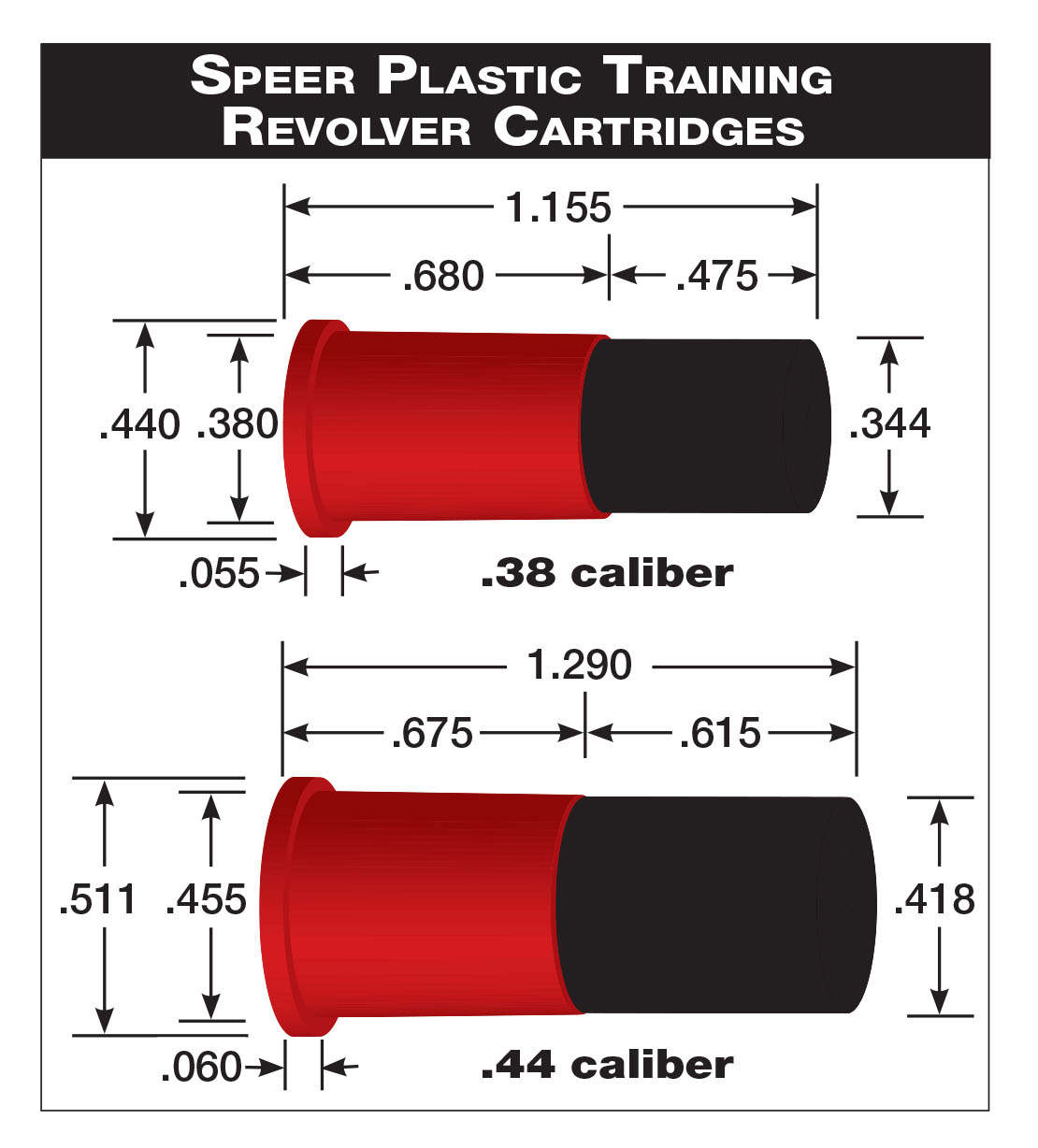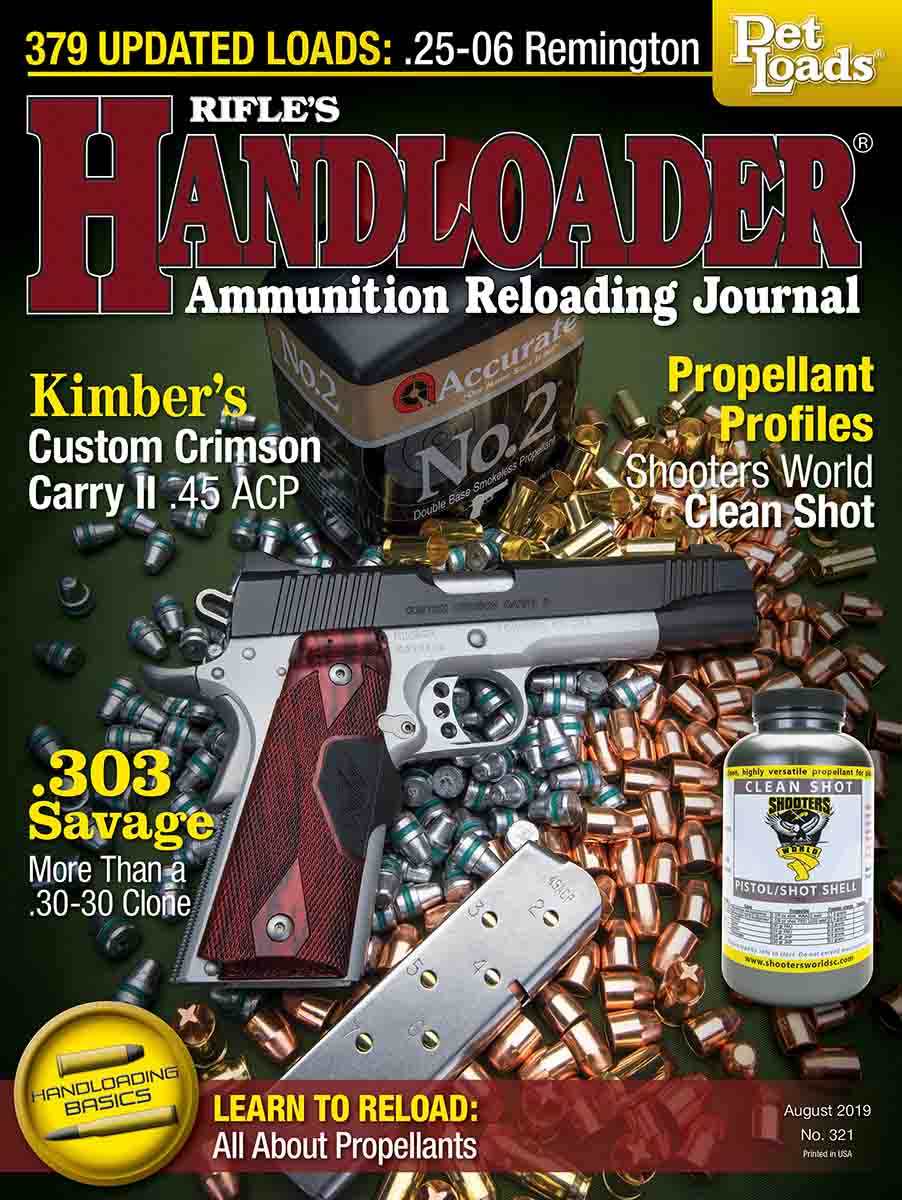Some of my earliest childhood memories are of tagging along with my dad to the limestone quarry where he shot centerfire handguns. Even though we were fortunate to have an excellent place to shoot, and Dad was always finding another interesting handgun to fiddle with, there was still a problem. In northern Illinois it was the weather. Three months of the year it was often
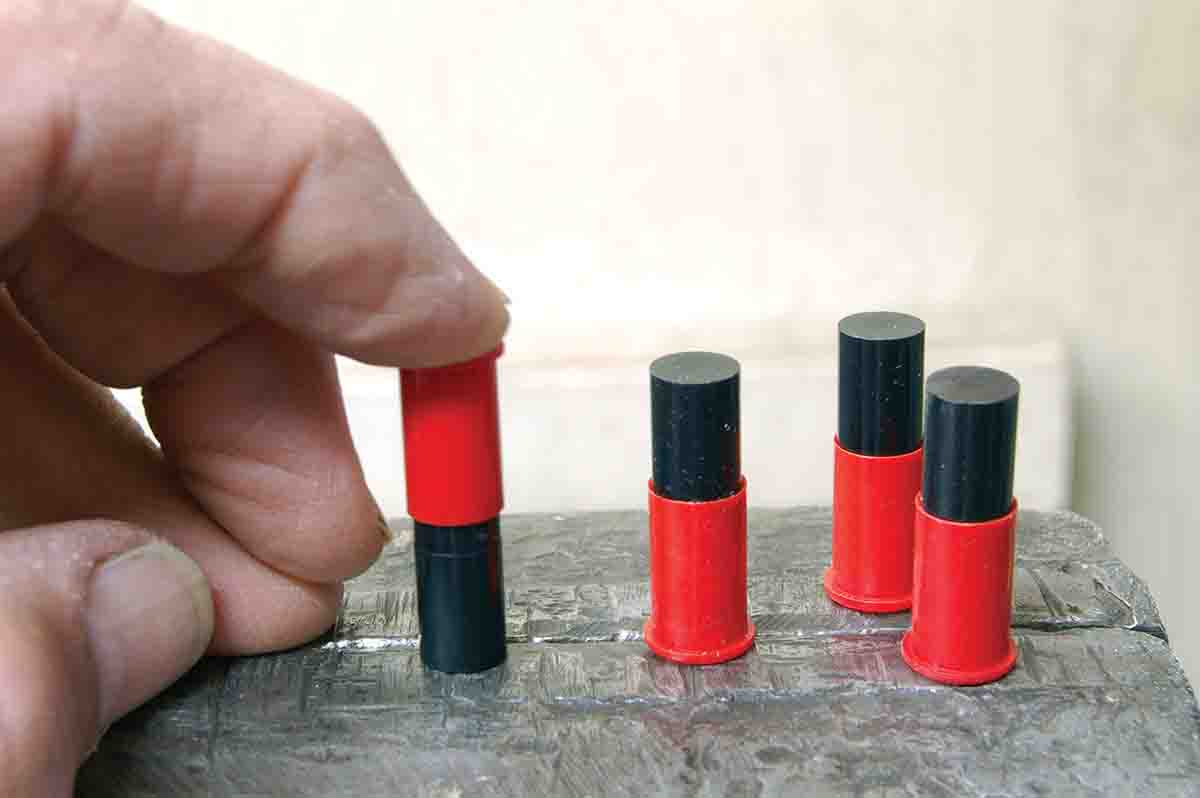
The plastic training bullets are seated by hand pressure.
too cold for enjoyable pistol shooting, and the rest of the time it rained every weekend – or at least it seemed that way to a boy who had been waiting all week to shoot something.
Immediately after supper on a cold winter night, Dad quietly disappeared. I later found him in the shop busily shaping small pieces of wood. On the bench were two bright-yellow boxes with red and black lettering, just like the ones Speer bullets came in. They did not, however, contain jacketed bullets.
One box held red plastic cartridge cases that looked like .38 S&Ws. The other was full of
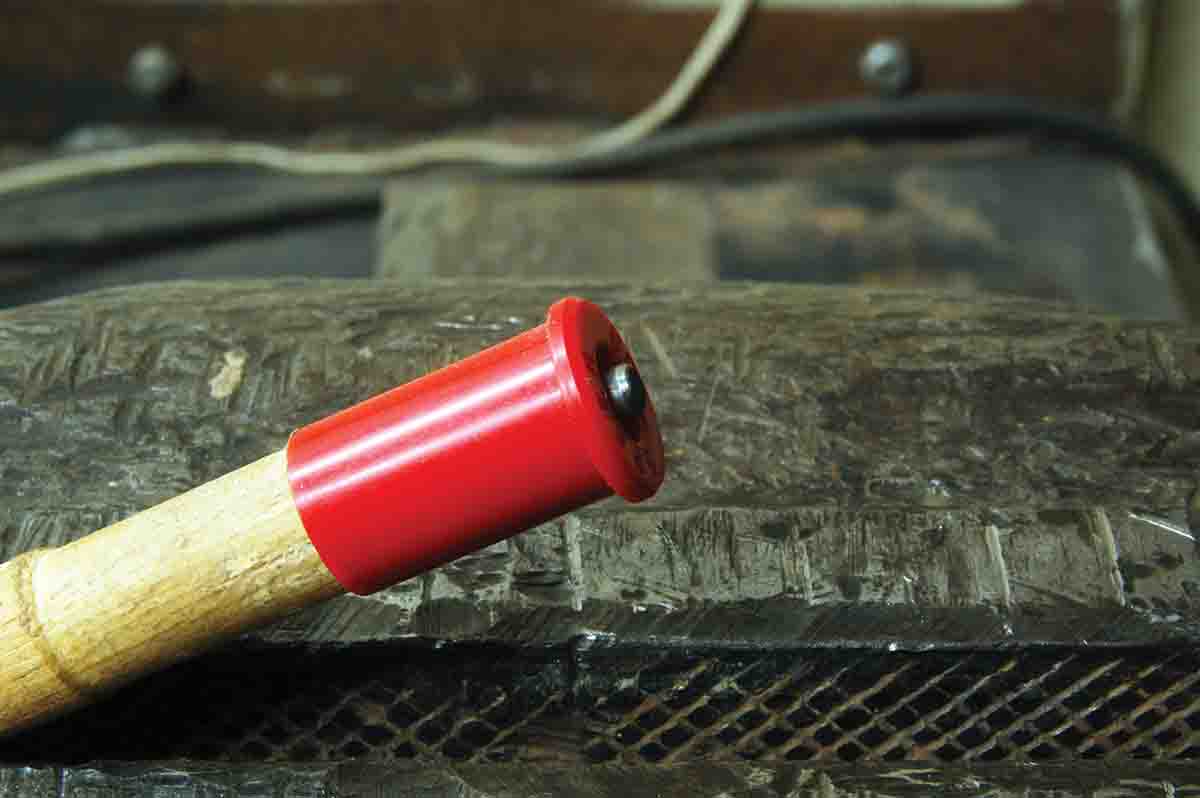
The decapping pin (nail) only needs to protrude from the case enough to eject primers.
black plastic cylinders (“bullets”) somewhat longer than a .38 Special wadcutter and of a diameter that looked like it would fit inside the red case. Of course, I had to try that. Success at anything, however, is a moving target for teenage boys. I simply could not get the red and black pieces to go together. Without looking up, Dad said simply, “Other end.” Sure enough, one end was very slightly smaller in diameter than the other, allowing it to enter the red case mouth.
By this time, Dad had made up a couple blocks of wood with short sections of protruding wood dowel rod. One dowel contained a nail for decapping, and the other had its end rounded a bit to push a red case down over a new primer. No powder was used.
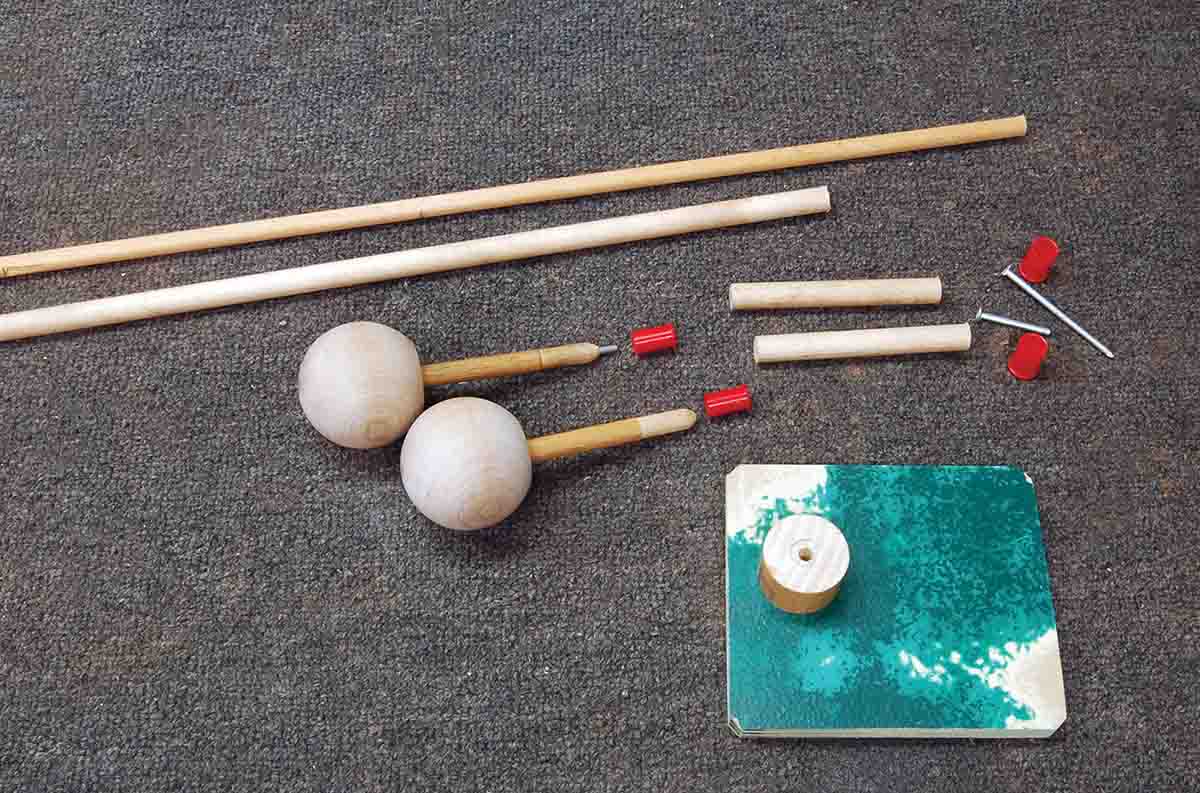
Loading tools for plastic training ammunition are easily made from wood dowels, ball handles and nails.
The shop was too small and cluttered for a shooting test, so we headed for the basement. On the way, Dad grabbed an open-topped cardboard box containing a blanket that served as a bed for our cat, which usually slept on the furniture anyway. The box was set up vertically, the blanket was folded so it also stood vertically, and a pistol target was taped to the edge of the open front.
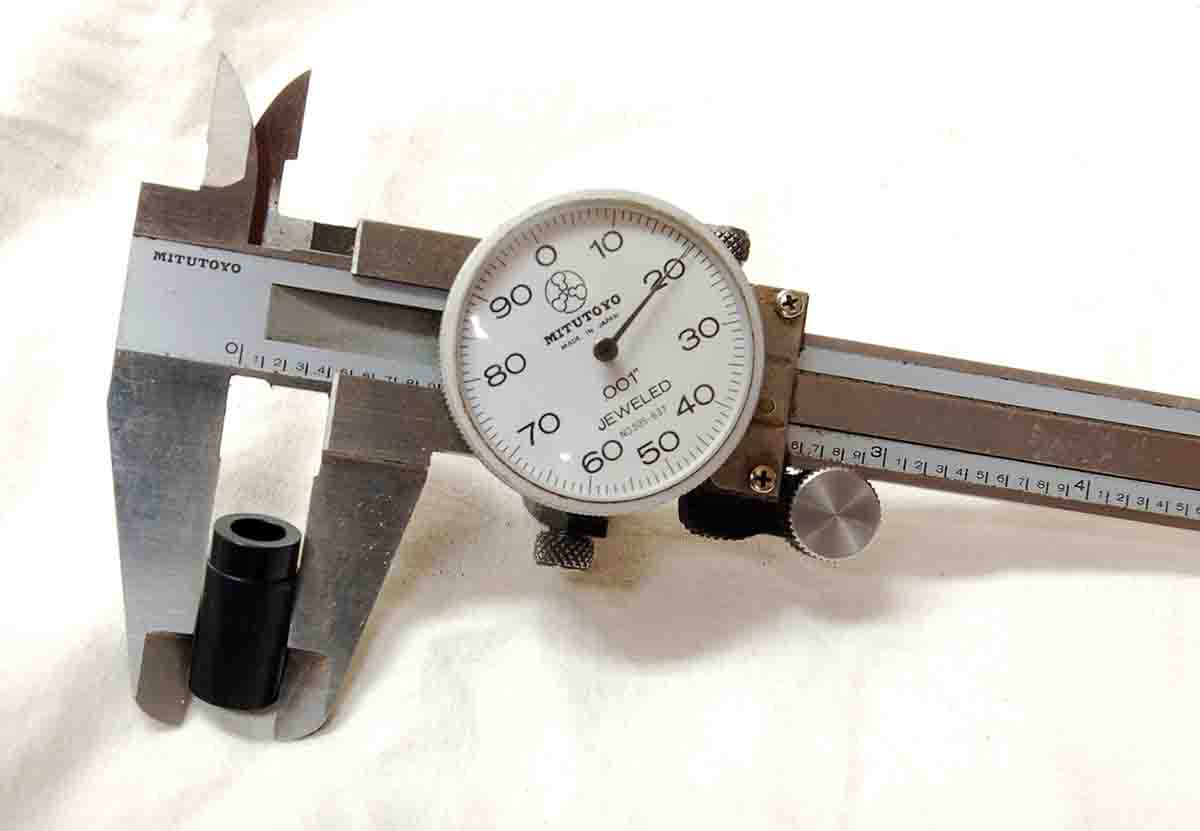
The bullets are essentially bore diameter, as this .44 shows, and do not engage rifling.
The first shot produced a loud pop – followed by a shriek originating upstairs that was obviously my mother, and the noise woke up my younger sister. Needless to say, this caused an instant ceasefire! Nevertheless, Mom not only soon approved of the activity but sometimes shot with us on cold or rainy days.
These memories came flooding back when it was recently learned that Speer might still sell these products. Local dealers had never heard of such a thing. A call to Vista Outdoor (Speer is a Vista company), however, proved that not only were the .38s still sold, there was also a .44 version as well. (Speer refers to these components as “plastic training bullets and cases.”) Both of these have now been
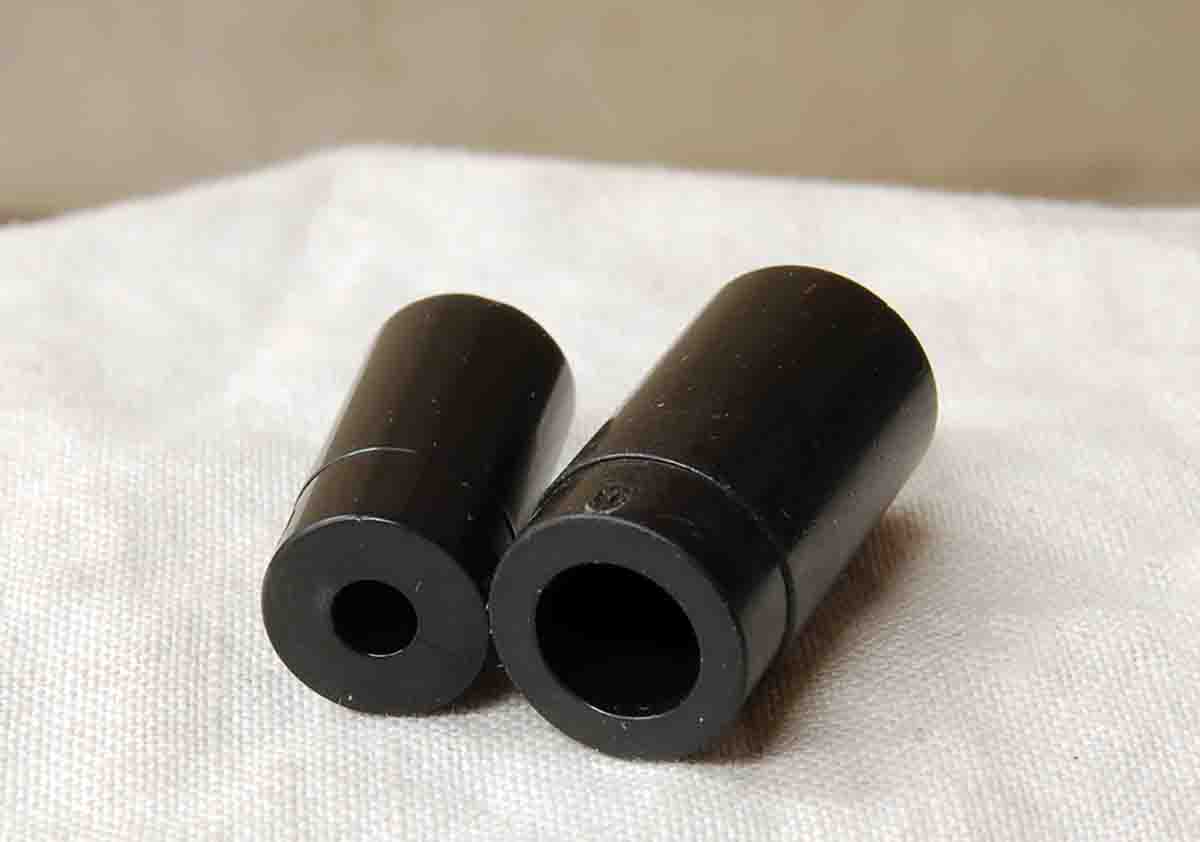
Speer plastic training bullets are hollowed in the rear, apparently to aid stability.
shot in a variety of revolvers.
Simple loading tools were made up just as Dad had done so many years before. This began with a 3⁄8-inch hardwood dowel for the .38s and a 7⁄16-inch dowel for the .44s. Round-knob handles were found at a wood hobby shop for 60¢ each, and the decapping pins were made from a nail. There are no critical dimensions except that the length of the dowel protruding from the handle should be at least 3 inches long for convenience.
In use, a hole a bit larger than a primer (both .38 and .44 cases use large pistol primers) is drilled in a scrap board, then fired cases are set over the hole and the primer is pushed out with the decapping tool. To reprime, place a primer on a hard, flat surface, set the case over it and push down with the second tool on which the end of the dowel is rounded. Priming takes a bit of practice, so some people prefer to use a handheld priming tool like those made by RCBS or Lee Precision. Please note, however, that the plastic case offers no noticeable resistance to primer seating when using such a tool. Any force applied will ruin the case or cause a misfire; it is nothing like seating a primer in a brass case.
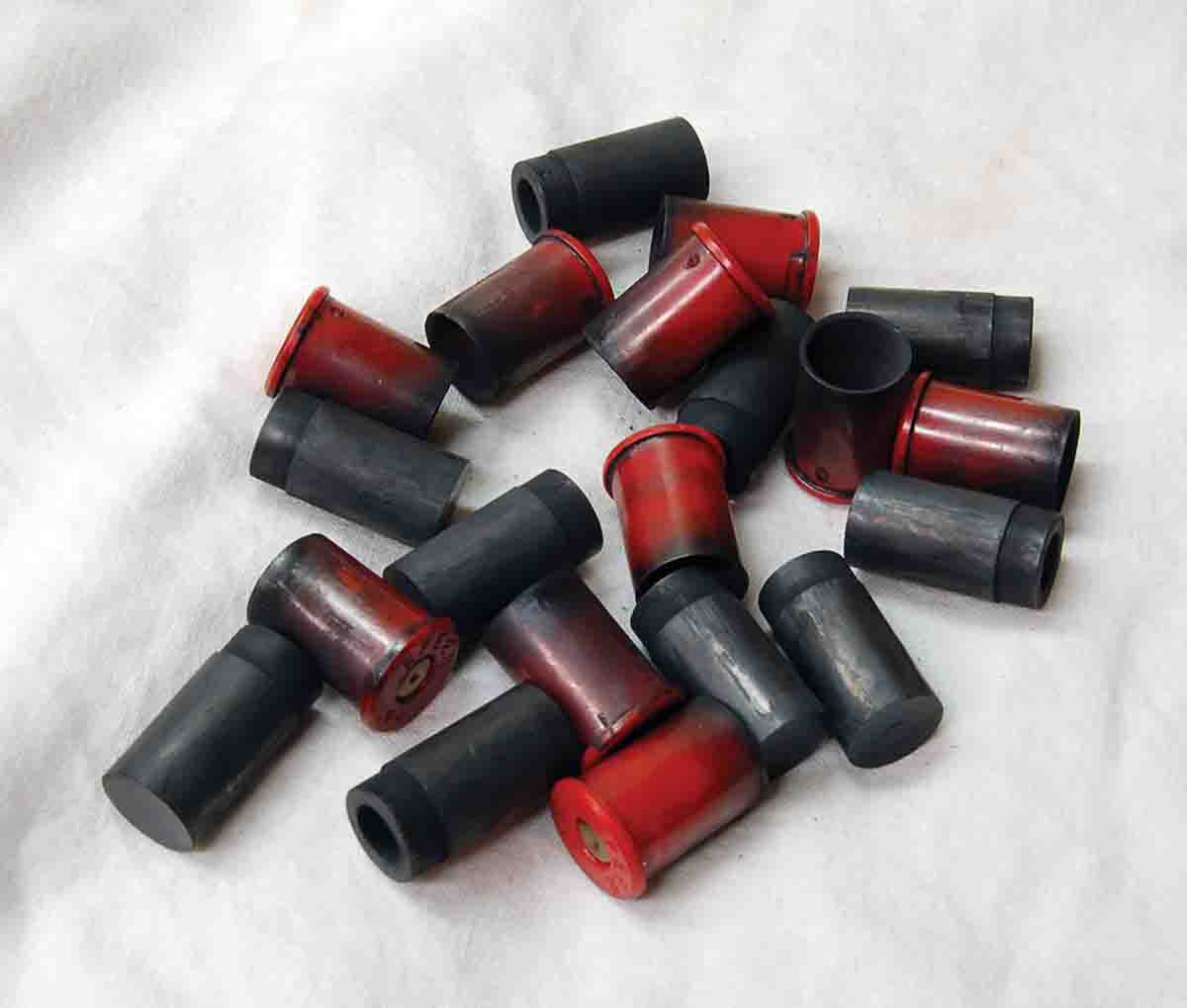
After 10 shots, cases and bullets are grungy but otherwise unaffected.
All that remains is to push a plastic bullet into the plastic case mouth until it stops. No powder is used! Bullet velocity is totally dependent upon the primer and, as one would expect, bullet velocity variation also affects group size. An accompanying table shows velocities obtained using five different primers. No group sizes are given because accuracy varies widely from gun to gun. There is a reason for this.
First off, when experienced revolver shooters think of short-range indoor loads they envision the so-called gallery cartridge. These are standard brass-cased rounds holding a lead bullet about 60 percent of normal weight and a pinch of fast-burning powder. Intended target distance is usually 50 feet. A sturdy steel bullet trap is mandatory.
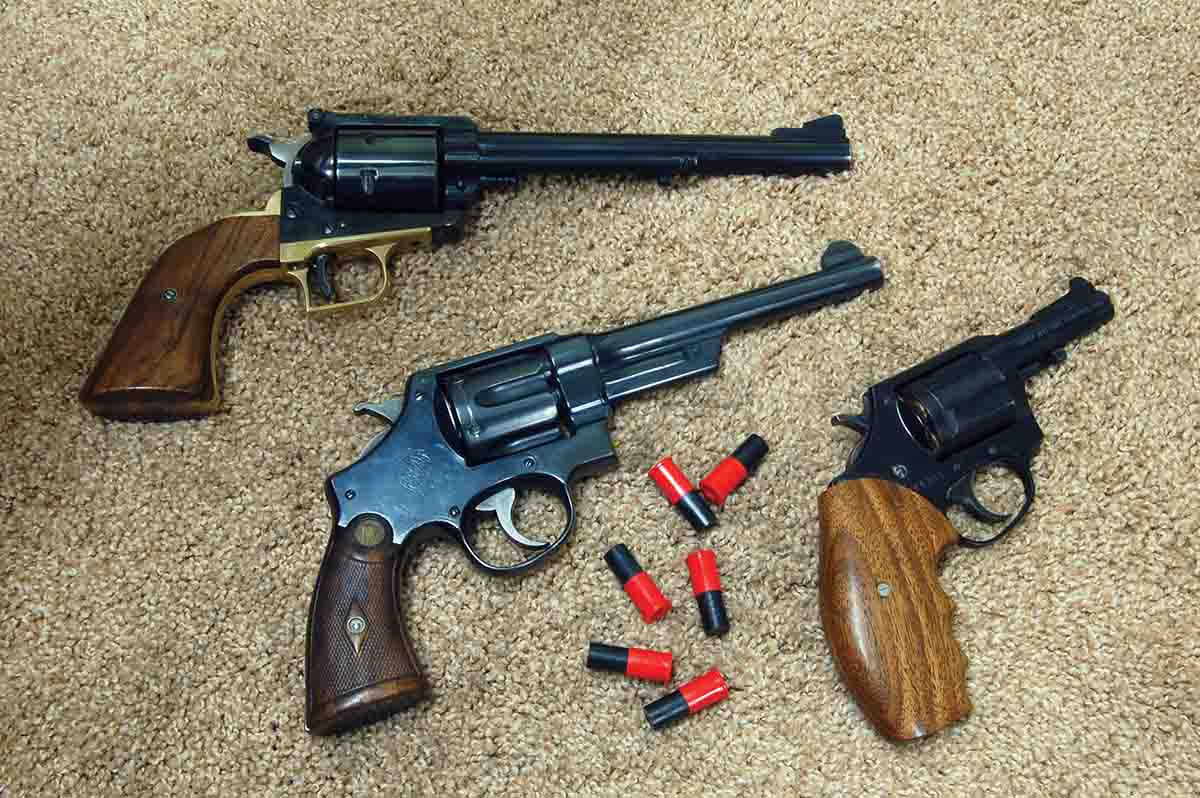
Some of the .44s used in testing the plastic training ammunition include a (1) Ruger Old Model Super Blackhawk, (2) Smith & Wesson Triplelock and an (3) original Charter Arms Bulldog.
Speer plastic-cased training loads are entirely different. The bullet is plastic, weighs very little (.38s are 14.5 grains, .44s are 19.5) and is hollowed at the rear to make its nose heavy. Most importantly, bullet diameter is a few thousandths inch under bore (land-to-land) diameter. The plastic bullet just rides the tops of the lands, the only way a primer alone could be adequate to propel it. Range to target is cut in half (20 to 25 feet) compared to gallery loads, but a heavy towel will stop the bullet.
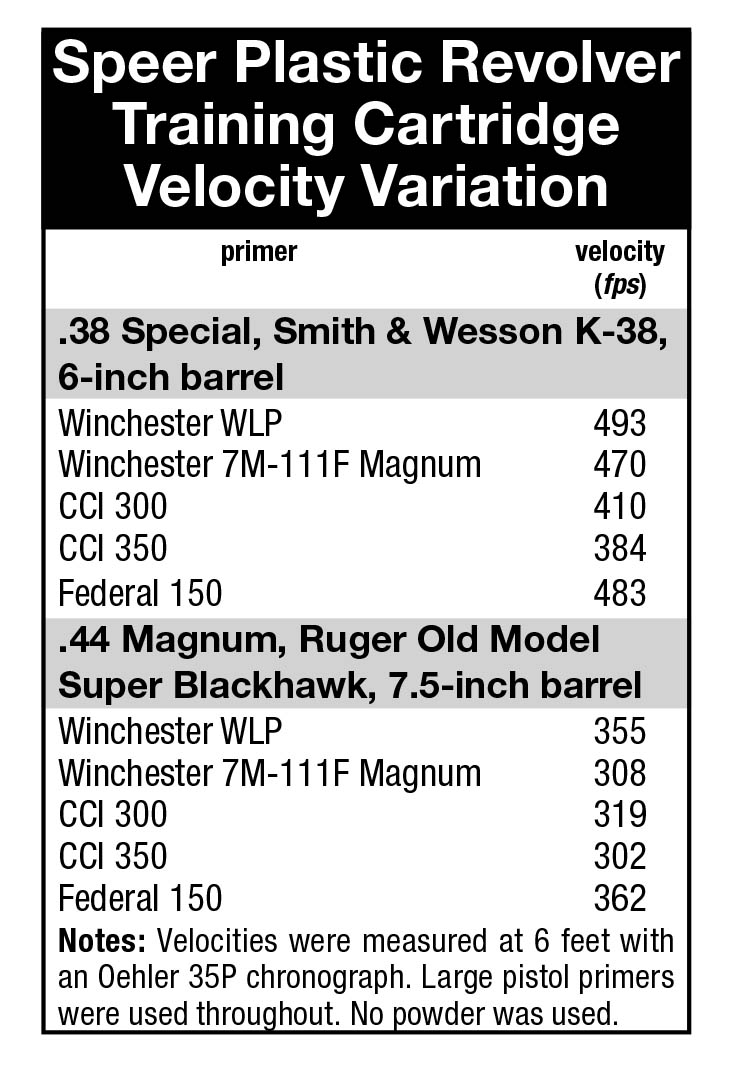
Twenty-seven revolvers have so far been shot using the Speer .38 and .44 training cartridges, leading to a few observations. One is that chamber length makes no difference; .357s may shoot as well as .38 Specials; .44 Magnums as well as .44 Specials. Another is that revolvers with barrels shorter than 4 inches gave groups larger than longer barrels. Only one 4-inch gun provided 2-inch groups at 20 feet. Six-inch barrels were much better, with a 7.5-inch Old Model Super Blackhawk and 10-inch T/C Contender being the best with under 2-inch clusters at 25 feet – but only with one specific primer.
Plastic bullets at these low velocities tend to tear target paper rather than punch clean holes. A cardboard backer can’t be used because most loads won’t penetrate it. Once a satisfactory load is found, I tape a string across the front of the catch-box and hang strips made from roofing felt (tar paper) on it by folding one end over. These fly off when hit. If your hold is a bit shaky and the string is hit, just tape it back in place.
Also, all primers leave residue in the bore. After 40 rounds or so, some primers leave enough to impede bullet passage. If this occurs, a patch soaked in mineral spirits quickly removes it. This is important as the cases and bullets used here have each been fired 20 times or more, and the only losses were due to excessive force in seating primers.
Speer plastic revolver training cartridges are certainly no substitute for lead bullet ammunition. Yet, when the right primer and range are found for a particular revolver, they provide shooting over the long winter months, rainy days or anytime the urge to pull a trigger becomes irresistible.
